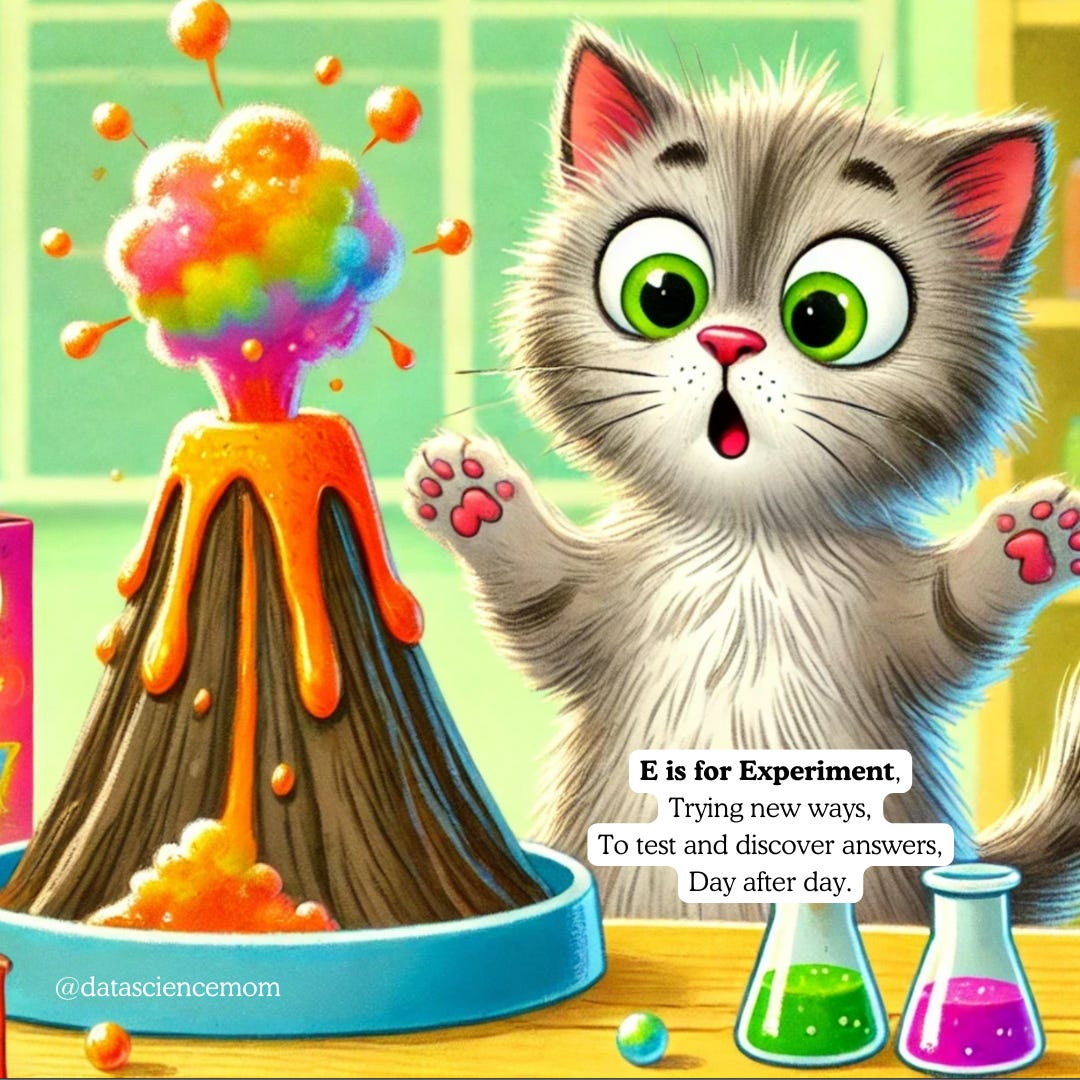This is part of a book project called: The ABC’s of Statistics… with Cats. If you’re new here or not sure of what I’m talking about, see my previous post. My plan is to release a page each week on Instagram with more details in this newsletter. It’s written with kids in mind, but I’ve also included some notes to grown-ups in italics 💁🏻♀️.
E is for Elephant? Egg? Engine?
Explain like I’m five(-ish)
An experiment in statistics is like a science project where you test a question or idea.
✨ First, you make a guess about what will happen 🤔
✨ Next, you set up a test 📝
✨ Then, you collect data from the test (lots of it) 📊
✨ Finally, you study the data to see if your guess was right or not! 🤓
Fun example 🍪🍪🍪
Let’s imagine that you’re in charge of a cookie shop, and you’re trying to figure out which cookie recipe people like more: Recipe A or Recipe B. Recipe A has an extra secret ingredient in it that might make it a big hit! 🪄
Here’s how the experiment works:
Make a guess 🤔: You suspect that people will like Recipe A more.
Set up a test 📝: You bake two big batches of cookies, one using Recipe A and the other using Recipe B. Then, you give 100 people cookies from Recipe A and another 100 people cookies from Recipe B. To keep things fair, you toss a coin to decide the recipe that each customer will try. Let’s say if they get heads, they will try Recipe A. If they get tails, they will try Recipe B. 💁🏻♀️ This step is called randomization and very important in statistical tests, but I won’t go into more details here.
Collect data 📊: After customers eat the cookies, you ask them if they liked the cookie. You write down their answers. 💁🏻♀️ This step involves a survey and is typical more detailed than a simple yes-no question.
Study the data 🤓: Once everyone has tasted the cookies and given their opinion, you count up the results. Let’s say 90 people out of 100 liked Cookie A, and 60 people out of 100 liked Cookie B. 💁🏻♀️ This step usually involves statistical tests to more precisely quantify if the difference is “big enough.”
Based on your experiment, it looks like Recipe A is more popular because a lot more people liked it! So, if you want to sell more cookies, you might decide to go with Recipe A. 💁🏻♀️ IRL, a business would consider other things like whether it’s more expensive to use Recipe A and/or harder to source the secret ingredient when making the final decision.
Today, experiments help us make all kinds of decisions, big and small. Technology companies use them to make decisions like picking the perfect button color to use in an app. Scientists and pharmaceutical companies use experiments to make new life-saving medicines.
Experiments are a smart way of understanding the world, solving problems and making good decisions! 🧪✨


